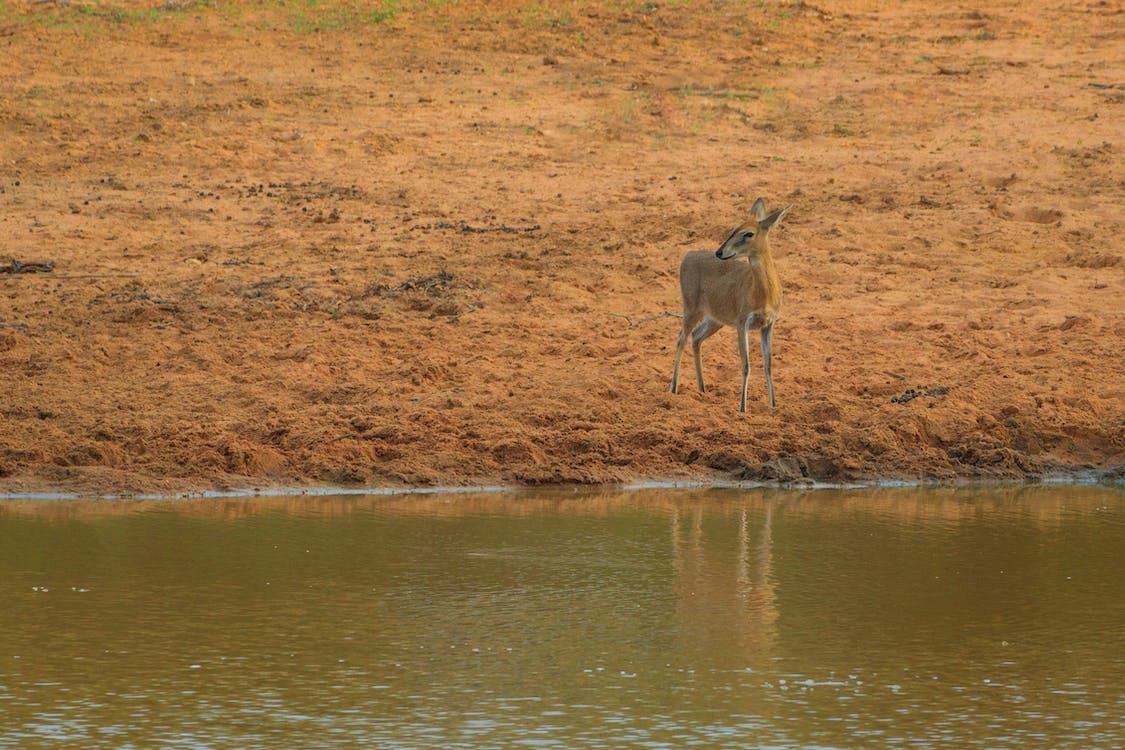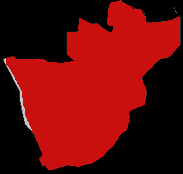It is the most common antelope species in Africa south of the Sahara. The species is also known as the grey duiker or bush duiker due to its grayish color, but bush may be a misnomer as this small antelope thrives in savannas, woodland, grasslands, and shrublands, rather than in thickets and forests. Meanwhile, the name "duiker" was derived from the Afrikaans word "duiker," which means "to dive," about the creature's habit of diving into vegetation whenever they feel threatened.
Read further to know more about the Common Duiker.
What is a Common Duiker?
Common Duiker (Sylvicapra grimmia), also called the grey duiker, bush Duiker, savanna duiker, or Grimm's Duiker, is a small antelope species occurring in much of sub-Saharan Africa. It thrives in various habitats, brimmed with ample vegetation, where they can seek refuge. This species feeds on fruits, seeds, leaves, and one of the few antelopes known to consume insects and carrion.
Its seven levels of classification are as follows:
Kingdom: Animalia
Phylum: Chordata
Class: Mammalia
Order: Artiodactyla
Family: Bovidae
Subfamily: Cephalophinae
Genus: Sylvicapra
Species: S. grimmia
Common Duiker Physical Description
Common Duiker is a small antelope that stands around 23.6 inches or 60 centimeters in height at the shoulder and grows about 100 centimeters or 39.3 inches in length. It weighs about 15 to 25 kilograms, with females being relatively larger and heavier than the females.
The coat may vary depending on the geographical location, generally dull reddish-brown to grayish-beige. The undersides are whitish, while the nose bridge, muzzles, and the forelegs are blacks. Only the males have horns, growing from 3-7 inches or 7 to 18 centimeters long. Meanwhile, the short tail appears to have a blackish top, accentuated by a shaggy white underside. Ears are long, pointed, divided by a hair tuft, occurring on the forehead. A black band also often stretches in the middle of the face, close to the nostrils.
Where can they be spotted?
Common Duikers are spread throughout southern Africa and sub-Saharan Africa, except for Central Africa's rainforests. The species can be found from Senegal to Ethiopia, down to the bottom of the African continent. They prefer savannas, woodlands, grasslands, mountainous regions with ample vegetation for shelter, but avoid arid, open areas, or densely-wooded locations.
Interesting Facts You Should Know About the Common Duiker
Common Duikers are omnivorous antelopes, feeding mainly on leaves, shoots, flowers, roots, tubers, seeds, and fruits. They are also a few of the antelopes known to eat insects and carrion. Occasionally, they may even eat frogs, rodents, lizards, and nestling birds. These antelopes may find their way to vineyards, orchards, plantations, and feed on fruits and crops, which is why they are sometimes considered "problem animals."
These small, shy antelopes are crepuscular, mostly active in the late afternoon, to nighttime, until early morning. It is an adaptation, as most of their predators lurk during the day. Whenever threatened, they have a habit of diving into thick vegetation and hiding as long as their predators won't detect them.
Common Duikers are monogamous but generally solitary. The female is seen more with her calf, while seldomly with her pair. Nevertheless, both the female and male are territorial, marking their range using their glands. They live in the same territory mainly for mating purposes and ward off any intruders that may come in their range. The male often chases other males passing by at high speed, using their horns to threaten each other.
The breeding season may happen any time in the year, with the gestation period lasting about 4 to 7 months. The female Common Duiker will find an area hidden in thick vegetation for cover during birth. She usually gives birth to a single calf, rarely two. The juvenile is precocial, meaning it is born in an advanced state and can walk and run within 24 hours. Both sexes will wean the calf, which will reach its full-grown size in about six months, with males reaching sexual maturity after a year, and females at 8-9 months.
Common Duikers spread throughout its vast range, and their population size is estimated to be at around 1,660,000 individuals, based on the IUCN Red List. The species is currently classified as Least Concern (LC), but their numbers appear to be declining.
WILDLIFE PARKS AND RESERVES WHERE THIS SPECIES IS FOUND:
BOTSWANA
SOUTH AFRICA
Kalahari Gemsbok National Park
NAMIBIA
ZAMBIA
ZIMBABWE
WILDLIFE PARKS AND RESERVES WHERE THIS SPECIES IS FOUND:


